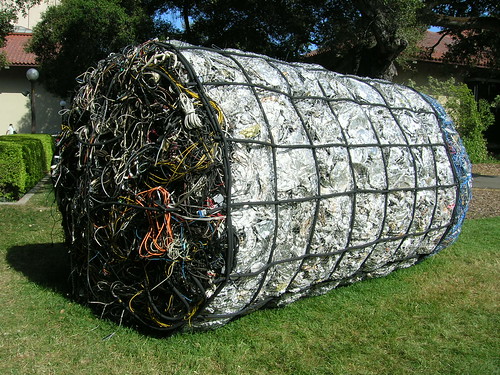| I just finished reading"Get Back in the Box : Innovation from the Inside Out"by Douglas Rushkoff. |  |
To me, it was a very clever book, easy to read and the author's point is quite smart. Rushkoff advocates for a new move: instead of thinking in terms of "out of the box experience", manager and innovators should better get back in the box by engaging their core competencies ("core values renewed from the inside out") to really meet people's needs and not trying to flood them with useless crap. This is also supported by turning every interaction users/consumers have with the company into an opportunity/source to innovate (and not by using consensual focus groups).
However, the underlying issue of this topic is certainly of much interest. It's simply the advent of a new Renaissance (rebirth) based on our relationship to others: the new renaissance person, better connected to others is engaged in the playful activity of fulfilling the need of the community instead of trying to win the Maslowian self-actualization.
Of course, this is a really pessimistic way of thinking and I am worried that he brought no critique on the table; Paul Virilio (for instance "City of Panic (Culture Machine)") would have been great to hear in this context
I like Rushkoff's stance about "resistance is futile, restoring order too" and surely that the driving force behind this is the social currency (not as formalized as in Cory Doctorow's book"Down and Out in the Magic Kingdom" in which he is talking about whuffies): people engage with each other in order to exchange "stuff", looking for group appartenance or cohesion. That is why the content is not the king: "The Internet was never about computers or the content they carried. It was about elevating people to the role of creators and letting them interact with this new capacity" as he says.
His part about play is also intriguing (he says that we'd better of getting engaged into playful activities, work should be more so that we would be in the "flow state" as in "Flow: The Psychology of Optimal Experience" by Mihaly Csikszentmihalyi). But this certainly controversial as shown by this discussion between Ulla-Maaria and Anne. I won't enter into the debate here, but for me, injecting more fun in my work is simply being paid for what I would do anyway (if is fits to my values).
Why do I blog this? this is not related with my research but it's rather helpful to understand how innovation is impacted by new social and cultural practices. However, I am not so optimistic as the author.
Besides, it's funny how this "Renaissance" meme is spreading: this will be the tagline of Reboot this year.
 Why do I blog this? Now that we're into space/place discussion, boundaries, perimeters and borders are certainly relevant because it allows to ask new questions regarding the relations between art and technology.
Why do I blog this? Now that we're into space/place discussion, boundaries, perimeters and borders are certainly relevant because it allows to ask new questions regarding the relations between art and technology.



 What is interesting is the interaction they designed engaging people in a playful activity:
What is interesting is the interaction they designed engaging people in a playful activity:
